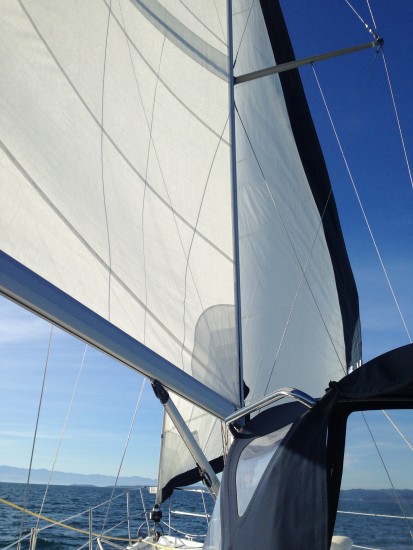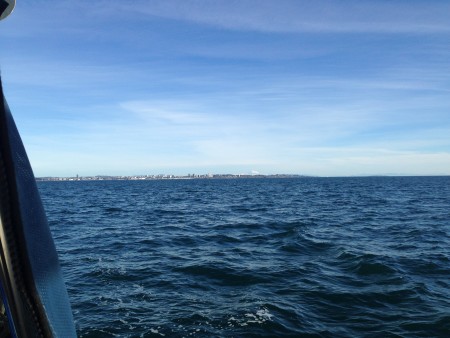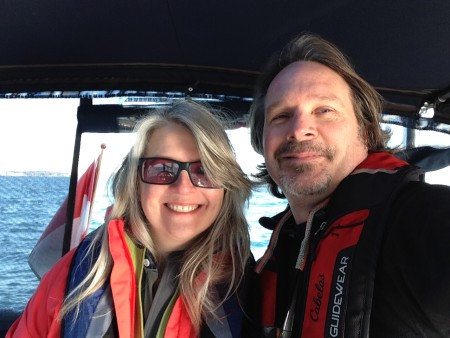A Brief Note about Life on the Hard
It’s another one of those new experiences that, having read about them or seen them again and again on YouTube, you think you are prepared for. Life on the hard is a … unique … experience and, while not exactly unpleasant, has very little to recommend it. Summed up, it’s sort of like getting all the negatives of living on a boat (with a few extras thrown in) and none of the benefits.
The first thing we really noticed about the hard was that the boat didn’t move. At all. I soon discovered we step differently when we are on a boat in the water; there is bit more roll in my step and my stance is a bit lighter—more on my toes, I guess. And the first time I hit the bottom of the companionway after the boat had been propped up on stands, it felt like my foot was going to go through the cabin sole. It just felt wrong and it took a few days to get used to it.
Water
The problem here is that we have no grey water tank, nor any way to redirect the grey water (grey water being what come out of the various sink drains as well as the shower sump). That means while I did have running water aboard, I couldn’t indiscriminately do dishes and drain all the scummy water onto the tarps under the boat.
I also couldn’t flush the head. That one was a bit unforeseen and we didn’t figure it out until we were getting ready to go to bed the first night. While whatever was in the bowl went directly into the holding tank, the head draws seawater through a thruhull from the stuff we are usually floating in to flush it down. No water…no flushing action.
Luckily Leslie was to be away for five days starting the day after we were hauled, so I could resort to more man-like solutions to the problem. After trying a few different methods, eventually I settled on leaving a big pot in the galley sink and collecting all the wastewater that accumulated throughout the day and then used it to flush the head at the end of the day, which was the only time I used it.
Wind
I’ve read time and time again that boats are hotter and stuffier when on the hard, and lo and behold it seems it’s true. There must be a constant breeze on the water, even on calm days, because the stuffiness has not heretofore been an issue. In the yard, it was hot and still, not to mention dusty and grimy, and the boat became pretty unbearable during the hot days no matter how many hatches I had open.
And then it turned cold. And the cold wind flowed straight into the cabin through the companionway. We’ve gotten used to swinging on the hook and always being bow into the wind. So I had to fire up the heater and leave all the hatches closed.
Noise
The yard started as early as 5 a.m. since that was when the tide was in. And It’s hard to sleep through a 83-ton travel lift rumbling past your stern again and again. And then the boat work would start. Banging, clanging, hammering and hosing, the number of different sounds emanating from the multitude of boats was an experience in itself.
And of course there were people, both staff and boat owners and trades people working from dawn to dusk. Boat yards cost money and people want to get things done. Nothing too obnoxious, but constant. Always someone yelling instructions or walking around discussing the next thing to bang on, hammer into shape or hose down.
Work

But I also had a lot of time to do chores. I stripped and refinished some of the teak, scrubbed the anchor locker (and then decided to buy new chain because I wasn’t putting the old rusty one back in my pristine locker—that, and it was almost time to replace it anyway).
I pulled my knot meter (which is so much less intimidating when you are not in the water), intent on replacing the paddlewheel that was missing one paddle. And then put it back unchanged when I discovered it was almost $150 to replace that one tiny little part. I also fixed the now shredded dinghy painter and patched some fibreglass in the dinghy’s hull.
I also tried to clean the boat, which turned out to be a fruitless endeavour. Right now, a week later, I still despair of getting some of the grime out of my non-skid. Next time I think there will be a rule that shoes need to be left at the bottom of the ladder to try to keep the truly grungy grunge out of the boat entirely. We did get most of the canvas scrubbed, but not until we were back in the water.
Odds & Ends
It was a remarkable social experience. I ran into Jim and Gwen from Sea Esta X, the Catalina 42 that accompanied us down the West Coast last September. And a few days later Tim and Donna showed up from Northwest Passage (the boat I crewed down the coast), and we had a grand visit. Everyone was back after a successful season cruising Mexico and were back to visit and wait out the hurricane season.
The I spotted Canty waiting to be hauled out. We had met and visited with Paul and Kirsty a few times during the first year of our cruise. They were there to haul out and do their bottom paint. It was nice to catch up and we compared schedules to see if we would meet up later in the month.
My friend Darrell from Schooner Cove also came by and bought me a coffee and we caught up. All in all, it was a reasonably social experience for being stuck in an industrial zone.
It wasn’t the worst experience I have ever had, although I think if both Leslie and I had been aboard, I would have been tempted to find a hotel. But it was sure a relief when we were back in the water and the world started to move again. Boats just aren’t meant to be still. Hopefully it will be a while before we have to endure it again.











 The Trip
The Trip

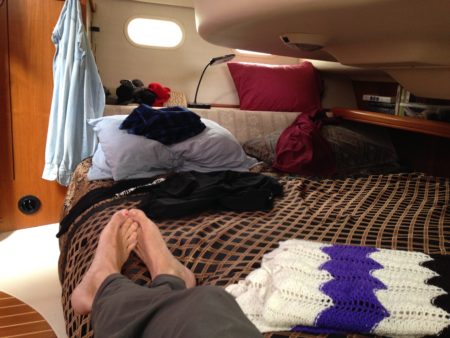
 Hand-in-hand with too much choice is too much room. There are no piles on a boat. Discipline is enforced because there simply isn’t enough room. A day of maintenance that involves moving gear from its normal place will turn the boat into chaos for everyone — and everyone is always equally eager to get it all back to a semblance of order. Our condo has 1900 plus sq. ft; if you put something new down in an out-of-the-way corner, for us, it’s 60-40 that it will ever make its way to a permanent new home. And the next thing you know you’ve got a pile that grows to such proportion that simply dealing with it becomes something you actively avoid.
Hand-in-hand with too much choice is too much room. There are no piles on a boat. Discipline is enforced because there simply isn’t enough room. A day of maintenance that involves moving gear from its normal place will turn the boat into chaos for everyone — and everyone is always equally eager to get it all back to a semblance of order. Our condo has 1900 plus sq. ft; if you put something new down in an out-of-the-way corner, for us, it’s 60-40 that it will ever make its way to a permanent new home. And the next thing you know you’ve got a pile that grows to such proportion that simply dealing with it becomes something you actively avoid.

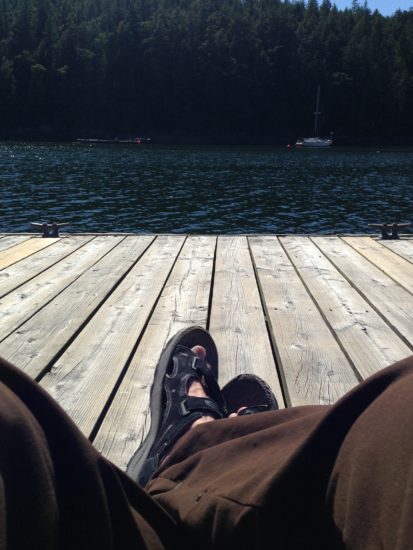

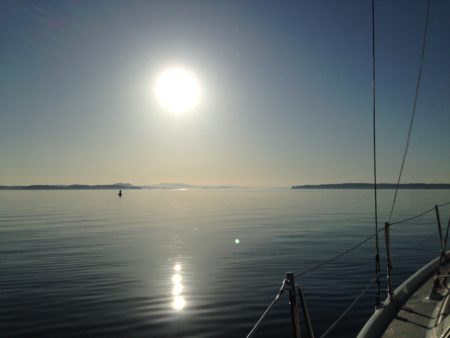
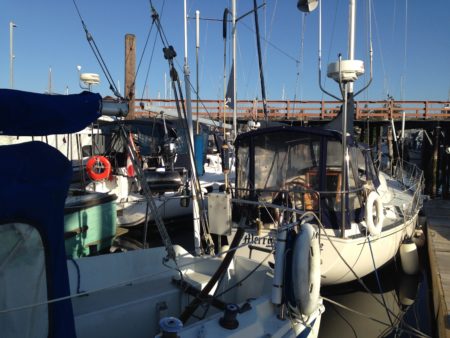


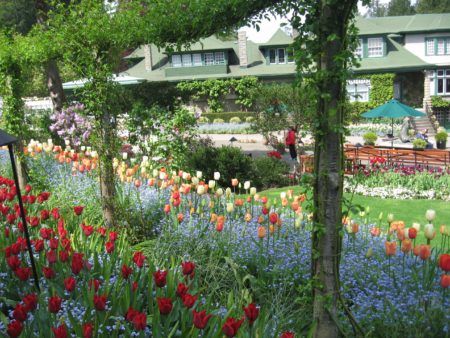

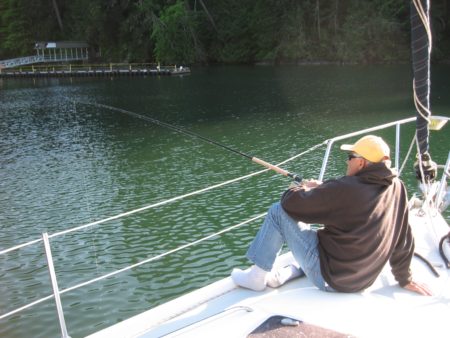
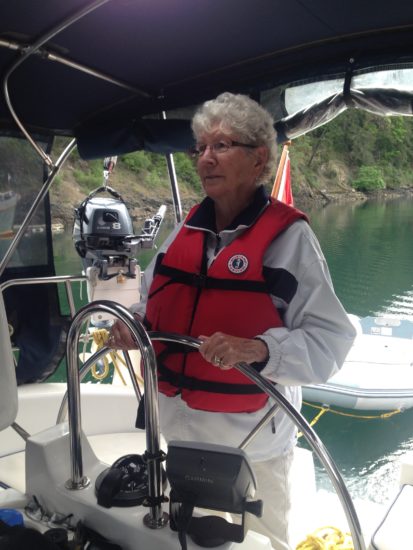
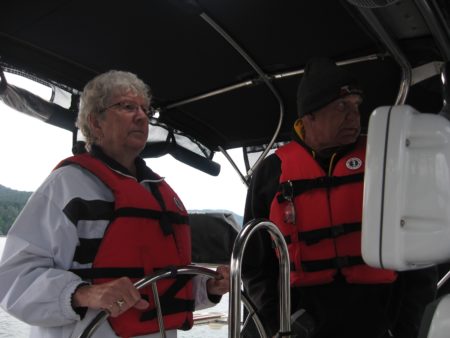
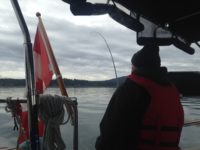


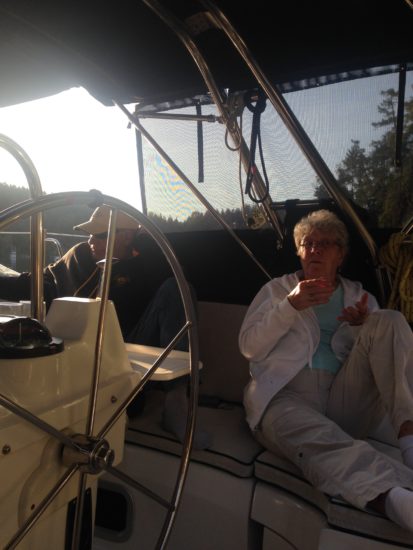
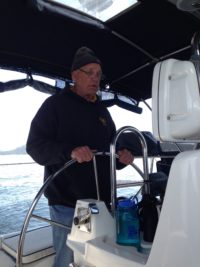
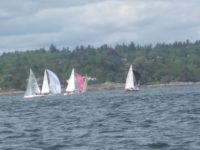
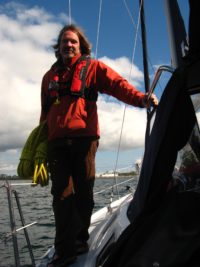



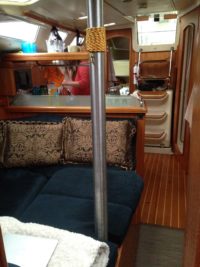

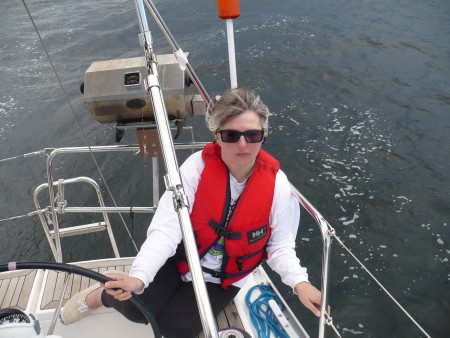






 It makes terrific pizza dough
It makes terrific pizza dough Try adding 2 tsp of sugar and cinnamon and a 1/2 cup of raisins
Try adding 2 tsp of sugar and cinnamon and a 1/2 cup of raisins 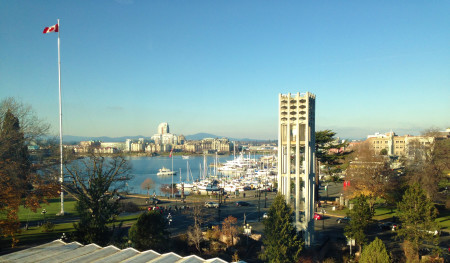

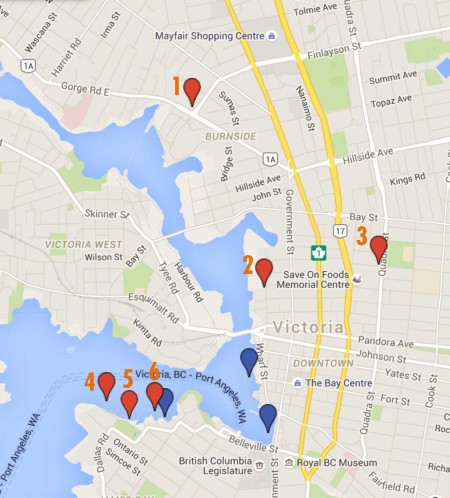


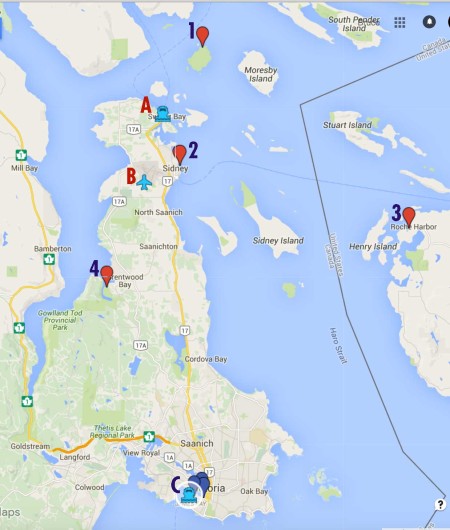
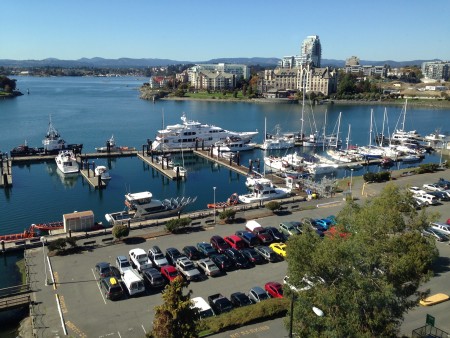

 Red line for our trip out downwind; Blue line for the close hauled trip back (rough approximations)
Red line for our trip out downwind; Blue line for the close hauled trip back (rough approximations)